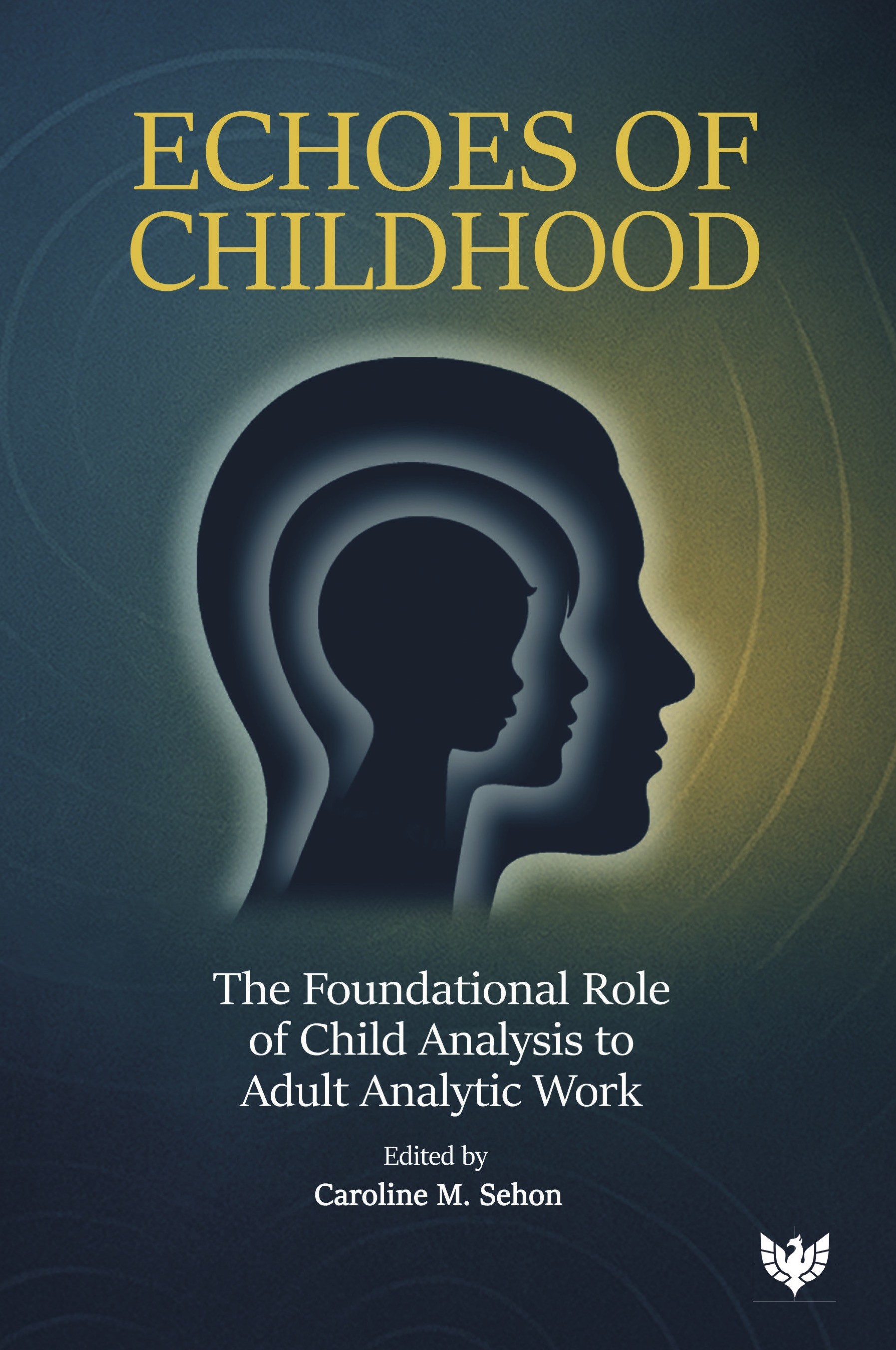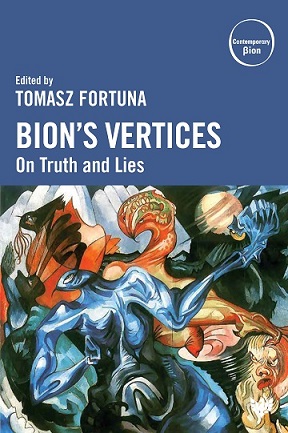Echoes of Childhood: The Foundational Role of Child Analysis in Adult Analytic Work

Book Details
- Publisher : Karnac Books
- Published : January 2026
- Cover : Paperback
- Pages : 284
- Category :
Forthcoming - Category 2 :
Psychoanalysis - Catalogue No : 98433
- ISBN 13 : 9781800134416
- ISBN 10 : 180013441X
There are currently no reviews
Be the first to review
Echoes of Childhood reveals how the wisdom of child analysis revitalizes work with adults. It gathers an international group of distinguished psychoanalysts who demonstrate the relevance of developmental perspectives for clinical practice by illustrating the enduring influence of early life on personality, relationships, and therapeutic change.
Echoes of Childhood: The Foundational Role of Child Analysis in Adult Analytic Work explores how techniques developed in child psychoanalysis open new depth and flexibility in the treatment of adults. Far from being a specialized niche, child analytic work reveals the earliest layers of psychic life. It offers tools that sharpen listening, expand tolerance of intense affect, and illuminate the hidden child within every patient. Editor Caroline Sehon brings together leading figures Ana Maria Barroso, Mary T. Brady, Talia Hatzor, Theodore Jacobs, Jeanne Magagna, Rex McGehee, Jack Novick, Kerry Kelly Novick, Daniel W. Prezant, Justine Kalas Reeves, Jill Savege Scharff, David E. Scharff, and Virginia Ungar to add their groundbreaking and engaging contributions on this vital component for adult analysis to her own. Drawing on richly detailed child cases, each chapter is followed by expert commentary, creating a dialogue that bridges the worlds of child and adult analysis. The reader is guided through clinical encounters that highlight how attention to play, gesture, nonverbal communication, and the management of overwhelming feelings – skills honed in child work – translate directly into more effective adult treatment.
Organized in developmental sequence, the book traces psychic life from infancy through childhood and adolescence into adulthood. Along the way, contributors show how early trauma, attachment, and the internalization of parental figures reverberate across the life span, and how psychoanalysis informed by child work can help transform these dynamics. Echoes of Childhood demonstrates that there is one psychoanalytic process manifesting across different stages of life.
This must-read book is of particular value to graduate psychotherapists, analysts-in-training, and candidates in integrated child analytic programs, while also serving as a rich resource for practicing child and adult analysts seeking to deepen their clinical repertoire. More broadly, it will engage mental health professionals and all readers interested in how childhood experience continues to shape the adult mind.
Reviews and Endorsements
This theoretically and clinically rich book is of enormous importance for a vital topic in psychoanalysis: the contributions collected in it show in a very personal way how, through personal experiences of child analysis and the psychoanalyst's attention to pre- and extra-linguistic forms of communication, the scope and effectiveness of psychoanalytic therapy and psychoanalysis for patients of all ages can be expanded. In addition to the illuminating theoretical foundation, the excellent case reports with their detailed descriptions of the course of treatment and several verbatim transcripts are particularly helpful to psychoanalysts and therapists who work exclusively with adults, enabling them to discover the specific value of child analytic experience and to use it in their own psychoanalytic work. The various contributions repeatedly illustrate in a touching way that a profound knowledge of child psychological development and experience gained from child analysis increase the analyst’s and therapist’s ability to bring about lasting psychological change, even in cases of severe trauma and developmental disorders. This has consequences for psychoanalytic training, because after reading this book, it becomes clear how much the inclusion of a child analytic perspective trains the ability to listen, understand, and speak in a way that is emotionally meaningful in psychoanalysis. But, as we know, the process of learning never stops. Therefore, this book is suitable for therapists- and analysts-in-training, as well as for therapists and analysts at every career stage. The book helps to keep alive the productive childlike urge for further knowledge about oneself and the world, even when working with adults, and it is this focus on living emotional knowledge that makes this book relevant for the present and future of psychoanalysis and psychoanalytic therapy.
Dr. med. Heribert Blass, President, International Psychoanalytical Association
Caroline Sehon’s edited collection is a generous, innovative, and open-minded exploration that thoughtfully engages with both clinical and conceptual psychoanalysis throughout the life span. Drawing on more than a decade of ongoing discussions among child analysts at meetings of the American Psychoanalytic Association, the book underscores the enduring importance of childhood experiences in shaping development. It vitalizes the concept of the child within the adult by vividly tracing the infantile threads across the life span, and it demonstrates the clinical necessity of listening to nonverbal communications where traces of the infantile find expression. Sehon’s organization of this book is masterly, allowing for both an immediate and a reflective reading experience. As I read, I felt invited into a dialogue with the contributors, who pause to wonder and pose questions about the different ways we might interpret the clinical encounter. A wonderfully rich and engaging volume, it is essential for practicing psychoanalysts and psychotherapists and stands out as an indispensable teaching resource.
Louise Gyler, PhD, President, Asia-Pacific Psychoanalytic Confederation
This inspiring volume demonstrates with clarity and compassion how a child analytic perspective offers unparalleled access to the adult mind. By attuning us to the “child within,” it enriches our capacity to listen beyond words, contain primitive states, and engage with the most vulnerable aspects of the psyche. The editor and contributors are to be commended for bringing together their profound clinical wisdom, reminding us that child analysis is not a narrow specialty but a vital foundation for analytic work across the life span.
Alessandra Lemma, Fellow, British Psychoanalytical Society; Visiting Professor, Psychoanalysis Unit, University College London and Consultant, Anna Freud Centre
This thoughtfully edited book meets a longstanding need in psychoanalysis: to demonstrate that child analytic work and thinking is something that all analysts should be exposed to. The last attempt to do so occurred thirty-five years ago and has been remarkably unsuccessful in altering the longstanding biases of those who work only with adults that child analysis is completely irrelevant for them. Child and adolescent analysis have occupied the role of stepchild in psychoanalysis since its inception. Lip service gets paid for the idea that psychoanalysis is a developmental psychology without much interest in learning about development or treatment of young children by analysts of adults. As a result, those who only treat adults lose the technical flexibility and insights that experience with children brings to our field.
For over a decade, both the American Psychoanalytic Association (APsA) and the International Psychoanalytical Association have encouraged psychoanalytic institutes to have integrated child and adult curricula, including graduation requirements. Kerry Kelly Novick and Jack Novick have advocated training “life-cycle psychoanalysts” who work with patients from all developmental stages. Others have illustrated that there is just one psychoanalytic process that characterizes both child and adult treatment with certain technical differences. Despite these innovative approaches and ideas, there remains great resistance to including child analytic and developmental literature and ideas in all psychoanalytic courses. All too often, candidates who work with adults only complain that such material is irrelevant. Faculty complain that they do not feel qualified to teach it or that it takes space away from other, more important content.
This volume by Caroline Sehon will prove a crucial counterpoint to these misguided resistances. Based on a longstanding discussion group at the APsA annual meetings that she chairs with Virginia Unger, Dr. Sehon offers us fascinating and illuminating clinical material and discussions of it by a range of experienced and renowned child analysts. For example, Rex McGehee and Ted Jacobs articulately show how David Scharff’s analysis of an obsessional latency-aged girl offers useful insights into obsessional issues in adult patients. Jill Scharff is equally articulate in discussing Dr. Sehon’s example of countertransference with an adolescent patient as she demonstrates that being aware of it can help the analyst of adults to “live in their body as a container for the unspoken, repressed, fragmented, and somatized representation of … unbearable reality.” The way in which working with children can sensitize analysts of adults to the importance of nonverbal communication is also emphasized in a chapter by Virginia Unger and Jill Scharff.
I urge all psychoanalytically oriented clinicians to study this book carefully. No matter what aged patients you work with, the insights offered in this book, using detailed clinical material, will be useful.’
Alan Sugarman, PhD, Inaugural Head, Child and Adolescent Psychoanalytic Department (American Psychoanalytic Association)
Table of Contents
List of illustrations
Permissions
About the editor and contributors
Editor’s note and acknowledgments
Part I: Early childhood
1. What child patients teach us about analytic technique
Caroline M. Sehon (USA)
2. Play, containment, and insights from child analysis
Caroline M. Sehon (USA) with integrated commentary from Jill Savege Scharff (USA)
3. Transference–countertransference, nonverbal communication, and interpretation in child analysis: Its relevance for adult analysis
Virginia Ungar (Argentina) with integrated commentary from Jill Savege Scharff (USA)
4. Learning from a hemophiliac boy
Jill Savege Scharff (USA)
Commentary
Caroline M. Sehon (USA)
Part II: Middle childhood
5. Concurrent analytic work with an out-of-control child and his parents
Justine Kalas Reeves (USA)
Commentaries
Mary T. Brady (USA)
David E. Scharff (USA)
6. Navigating infantile anxieties in a traumatized child and family
Ana Maria Barroso (Mexico)
Commentaries
Talia Hatzor (USA)
Daniel W. Prezant (USA)
7. Analytic treatment of an obsessional ten-year-old girl
David E. Scharff (USA)
Commentaries
Theodore J. Jacobs (USA)
Rex McGehee (USA)
Part III: Adolescence
8. Countertransference in child analytic work: Piecing together a fractured mind
Caroline M. Sehon (USA) with commentary from Jill Savege Scharff (USA)
9. A two-systems treatment of a late adolescent
Kerry Kelly Novick (USA)
Commentary
Jack Novick (USA)
Part IV: Adulthood
Introduction to Chapter 10: The experience of infant observation and its relevance to adult analysis
Jeanne Magagna (UK)
10. Tentacles of the past: A dream of archaic dependency
Caroline M. Sehon (USA)
Commentaries
Jeanne Magagna (UK)
Daniel W. Prezant (USA)
11. Refinding the ghosts in the nursery: The value of child analysis for adult psychoanalytic treatment
Caroline M. Sehon (USA) with integrated commentary from Jill Savege Scharff (USA)
Index
About the Editor(s)
Caroline M. Sehon, MD, FRCP(C), FABP, is a supervising child and adult analyst and clinical professor of psychiatry at Georgetown University. She serves as director of the International Psychotherapy Institute (IPI) and is past chair of the International Institute for Psychoanalytic Training at IPI. At the American Psychoanalytic Association, Dr. Sehon serves as secretary and chairs the Psychoanalysis in the Community Committee and the discussion group “Enriching Adult Analytic Work by Child Analytic Training and Practice.” She serves on the editorial boards for the journals Couple and Family Psychoanalysis and Psychoanalysis and Psychotherapy in China. Dr. Sehon has published on child and adult psychoanalysis and teleanalysis. She practices child and adult psychoanalysis, and couple and family therapy in Bethesda, Maryland. She received the 2025 IPA Community and the World Award (Second Prize, Psychoanalytic Assistance in Emergencies and Crises).
Customer Reviews
Our customers have not yet reviewed this title. Be the first add your own review for this title.
You may also like
Can We Play Now? The Meaning of Play Throughout Lifetime Development
Nadja Julia Rolli
Price £23.19
save £5.80







